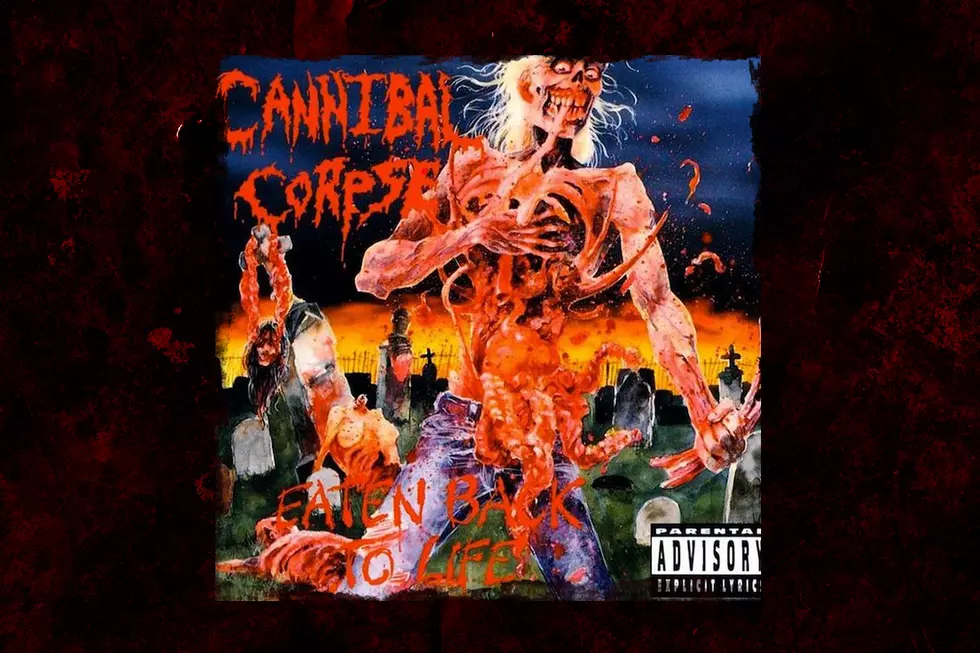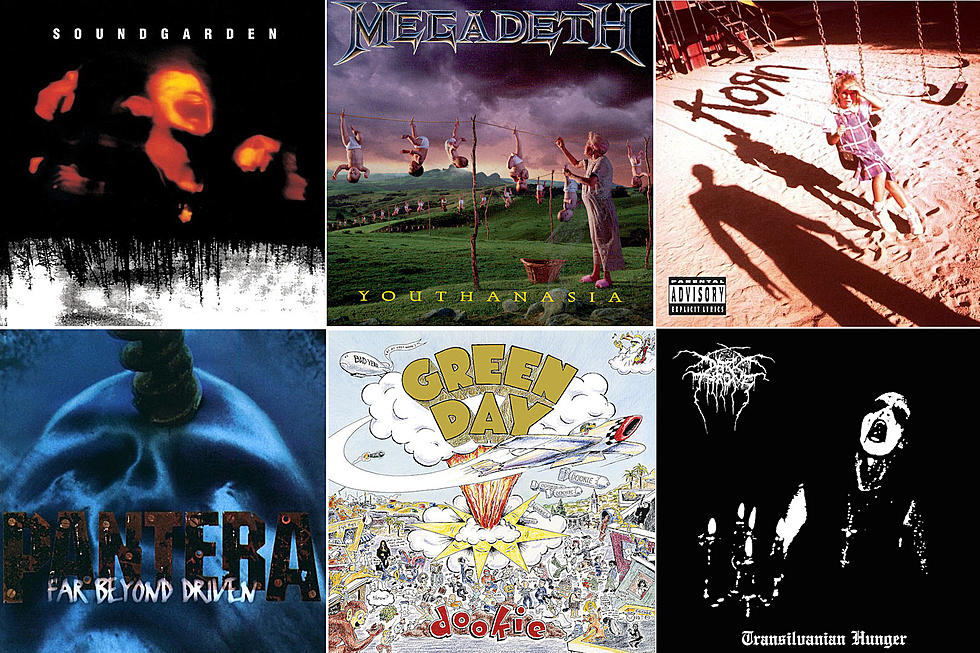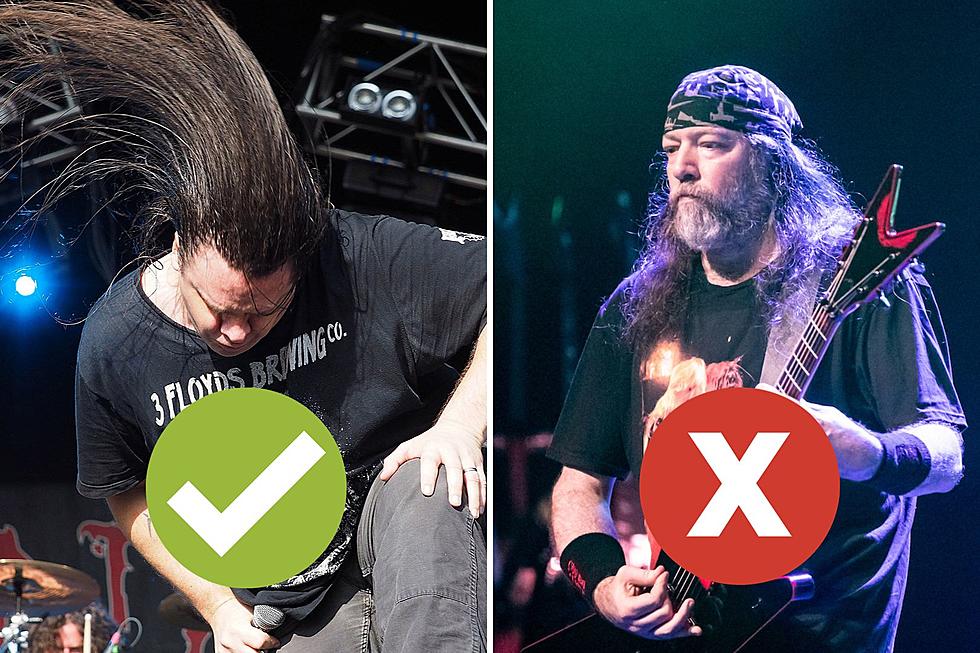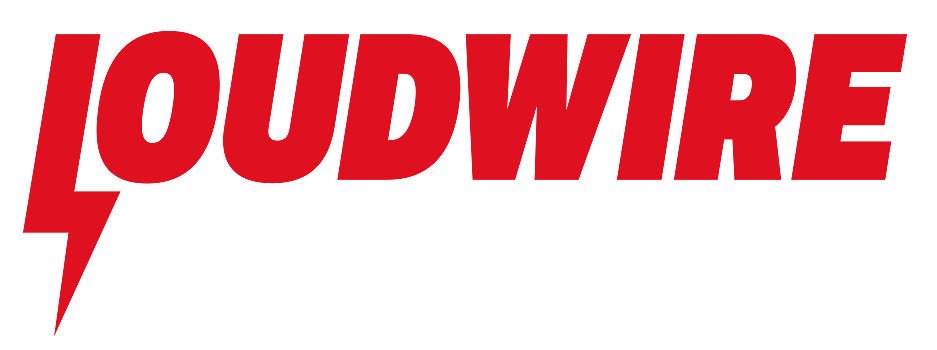
33 Years Ago: Cannibal Corpse Pile on the Gore With ‘Eaten Back to Life’
Like many major ‘90s U.S. death metal bands, Cannibal Corpse recorded their debut album Eaten Back to Life at Tampa, Florida’s Morrisound Studios. Yet the classic release, which came out August 17, 1990, was written in the band’s hometown of Buffalo, New York. It would be another four years before Cannibal Corpse moved to Tampa to be a part of the city’s thriving death metal scene.
“It’s funny because even before we moved to Tampa, a bunch of people thought we were originally from Florida because so many death metal bands started there and we were already recording there,” bassist Alex Webster told me in 2006. “We were listening to albums like Altars of Madness by Morbid Angel and Leprosy by Death, and we noticed they were done at Morrisound. So we went down there and had a really great time. We got to know a lot of bands on the scene and made a lot of friends long before we moved there.”
With Eaten Back to Life Cannibal Corpse strived to up the ante on the graphic lyrics of bands like Death and Carcass and deliver brutal imagery and guttural vocals that matched the intensity of their grinding riffs and hammering blast beats. Combining five songs from their 1989 demo with six newly penned numbers in the same vein, the band put together a raw and powerful collection of tunes that would stand the test of time.
Even though many of their later albums were more rhythmically and musically complex, their first four albums, including Eaten Back to Life, have an untamed ferocity to them that made them a highlight of the genre. Much of this has to do with vocalist Chris Barnes, who sang in a visceral, guttural growl and wrote songs inspired by newspaper headlines and horror film plot, and featuring titles like “Scattered Remains, Splattered Brains,” “Edible Autopsy” and “A Skull Full of Maggots.”
Cannibal Corpse, "Scattered Remains, Splattered Brains"
The artwork for Eaten Back to Life was rendered by horror comic book artist Vince Locke (Dead World) and depicted a zombie feasting on his own ribs and intestines. It was a tame appetizer for the visual atrocities Locke would create for the band’s subsequent albums. As vicious as Cannibal Corpse were from the start, they exhibited a twisted sense of humor within the carnage, even dedicating Eaten Back to Life to “the memory of Alferd Packer, the first American cannibal (R.I.P.)”
Because of their graphically violent lyrics, many of which were featured female victims, Cannibal Corpse provoked controversy. With songs like “Born in a Casket,” it’s easy to see why: “Sex with the dead, now I must breed/ Within the stiff corpse planting my seed/ The taste of formaldehyde, smell of the rot/ Suck out the goo, feast on her crotch.”
Cannibal Corpse, "Born in a Casket"
Despite the graphic content, both bassist Alex Webster and original vocalist Chris Barnes (now in Six Feet Under) insist they never wanted to be seen as misogynist.
“Chris [Barnes] wrote nearly all the lyrics back then, and that’s just the kind of horror he liked,” Webster said. “He wanted to focus on women victims, but he is not a misogynist and neither are any of the rest of us.”
“I really wasn’t doing it to shock people,” insisted Barnes when we spoke in 2008. “I just thought it was exciting and the subject matter was interesting. It went along with what I gained from listening to the music. What those guys wrote presented such a violent image to me, I felt like I had to match the music I was being presented with to something lyrically. So I tried to make the lyrics as violent as the music was. And I was able to pull from my imagination some sick qualities of mankind and put them down on tape. I discovered that the stories were so much uglier and more disturbing when the victims were female. That’s really what I was going for, ugly and disturbing.”
Cannibal Corpse wrote the songs that weren’t on their original demo in the first few months of 1989 and then recorded the entire album in a few short weeks at Morrisound in May 1990 with producer Scott Burns, the go-to guy for Florida death metal in the late ‘80s and early ‘90s.
“Scott knew what to do with fast and brutal bands, and not a lot of guys did at the time,” Barnes said. “Also the studio is great. They’re always really up to date as far as the technology and equipment goes. They have a great sounding couple of rooms. It’s always been real accommodating, relaxed, grass roots type of place. And it really drew people from the death metal scene down here. That was a big factor in Tampa becoming a haven here. They wanted to be close to the studio.”
Cannibal Corpse, "Shredded Humans"
Part of why Eaten Back to Life was so well received has to do with the structure of the album, which is rooted in death metal but steeped in thrash, making it the perfect gateway to the underground. There are ominous chugging riffs in the intro of “Shredded Humans” and gang-vocals in “Mangled” (which features a cameo by Deicide vocalist Glenn Benton). Other sections are fast, savage and unrelenting, trumping the speed of innovators Obituary and Death.
“Everyone tried to be faster and heavier than everyone else,” Webster said. “I don’t know if that was necessarily negative because that competitive spirit helps some bands better themselves. Everyone wants to be the fastest and the heaviest, and that kept the scene moving forward in a faster, heavier direction. Sometimes it sounded like people were talking about a sporting event, not music. They were talking about how many beats per minute something could be done and who had the fastest picking, the fastest blasts, the fastest solos. There was a lot more of that down here than there we ever saw up north.”
At the time of its release, Eaten Back to Life was one of the sickest, most demented death metal albums ever released. Of course, over the next five years Cannibal Corpse would release even faster, more disturbing songs and accompanying art work that would land them in the crosshairs of conservative, God-fearing Americans, politicians looking to gain points with scared parents and anyone unsettled by genuinely sick s--t. While it wasn’t the goal, the controversy helped Cannibal Corse sell more records and increase their following. Still, despite their influence Cannibal Corpse were too brutal to cross over into the mainstream.
“People ask us if we’re disappointed that we don’t sell as many records as a lot of these metalcore bands, and I’m really not,” explained Webster “I look at it like the tortoise and the hare scenario. Our career has been slow and steady, and we’ve seen other people pass us before, but a lot of them flame out. None of us wants a Lamborghini. As long as we don’t have to work day jobs, we’re happy.”
Loudwire contributor Jon Wiederhorn is the author of Raising Hell: Backstage Tales From the Lives of Metal Legends, co-author of Louder Than Hell: The Definitive Oral History of Metal, as well as the co-author of Scott Ian’s autobiography, I’m the Man: The Story of That Guy From Anthrax, and Al Jourgensen’s autobiography, Ministry: The Lost Gospels According to Al Jourgensen and the Agnostic Front book My Riot! Grit, Guts and Glory.
Cannibal Corpse Albums Ranked
More From Loudwire









